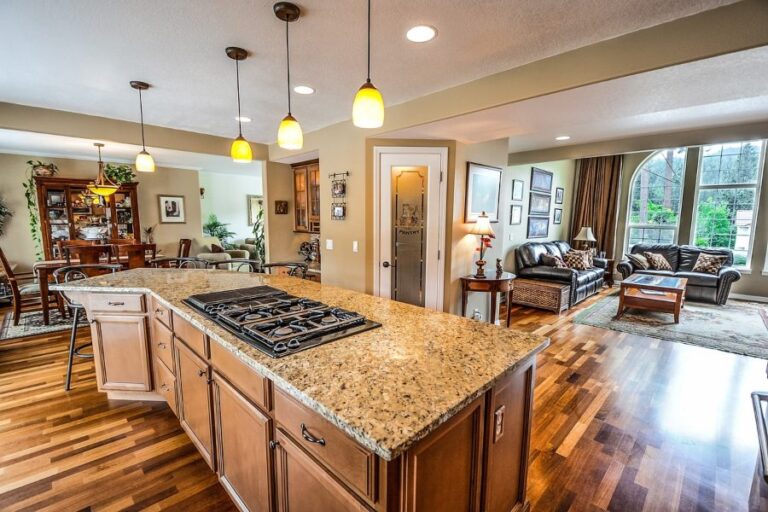Ever looked around your house in Fenton and wondered how it always feels like the list of things to fix, replace, or upgrade somehow doubles every season? Between rising costs for materials and the way energy bills keep creeping upward, figuring out which projects matter most can feel like a full-time job. In this blog, we will share practical home improvement tips that help you tackle upgrades with purpose, without wasting time or money.
Know Where to Invest First
One of the biggest challenges for homeowners is deciding where the budget should go when multiple areas need attention. A home’s comfort and efficiency often hinge on the systems that aren’t visible, which is why focusing on major utilities before cosmetic updates can save money over time. Energy prices and maintenance costs have surged in recent years, which means the wrong priorities can lead to higher bills and more breakdowns later.
For many homes, especially those older than a decade, a key area to assess is the heating and cooling system. Upgrades here often cut energy costs while improving overall comfort. Professional services for HVAC system replacement in Fenton, MI can address long-standing efficiency problems and reduce the risk of costly emergency repairs when temperatures swing. Replacing outdated systems also adds value to the property, as buyers increasingly ask about energy performance and reliability when considering a home.
Once core systems like heating, cooling, and insulation are handled, cosmetic improvements like flooring or updated fixtures feel more satisfying because they sit on top of a home that functions well. Skipping that foundational work may leave homeowners paying more in the long run as recurring energy costs and repair bills drain funds that could have gone toward better upgrades.
Use Energy Efficiency as a Guiding Principle
Energy costs have become one of the fastest-rising expenses for homeowners, driven by both market fluctuations and increased demand during extreme weather. While big upgrades like window replacements or solar installations get most of the attention, there are smaller, more affordable ways to reduce energy waste without taking on massive projects.
LED lighting is an easy starting point, cutting electricity use and lasting far longer than traditional bulbs. Weatherstripping around doors and windows reduces drafts that strain heating and cooling systems, which is especially important in regions with fluctuating seasonal temperatures. Installing programmable or smart thermostats also allows more control over energy use, ensuring systems only run when needed rather than wasting power throughout the day.
These smaller steps often create immediate savings that can be reinvested into larger projects over time. They also make homes more comfortable, reducing the temperature swings and drafts that many owners tolerate without realizing how easily they can be fixed. Energy efficiency not only saves money but increasingly boosts property appeal as buyers pay closer attention to monthly costs before making an offer.
Focus on Upgrades That Add Long-Term Value
Not all home improvements pay off equally. A freshly painted room can feel nice but won’t add lasting value the way updated kitchens, bathrooms, or exterior improvements can. While personal comfort is a valid reason for upgrades, balancing personal preferences with the potential return on investment is crucial.
Kitchens often provide the highest return because they remain central to how buyers judge a home’s appeal. Even modest updates like new cabinet hardware, energy-efficient appliances, or modern countertops can refresh the space without requiring a full gut renovation. Bathrooms follow close behind in adding value, with functional improvements like water-saving fixtures and updated tiling delivering both immediate utility and resale appeal.
Curb appeal also plays a role, especially as more buyers start their search online. Fresh landscaping, well-maintained siding, and a functional entryway can dramatically improve first impressions, which often influences how quickly and competitively a home sells. Investing in these visible areas after core systems are updated creates a layered approach that benefits both current living and future resale.
Maintain Regular Inspections to Avoid Surprises
One of the easiest ways to keep improvement costs under control is by catching issues before they become major repairs. Regular inspections of roofs, plumbing, and electrical systems help identify wear or potential hazards early, allowing for planned maintenance instead of urgent, expensive fixes.
Roofing problems, for instance, rarely start with leaks; minor shingle damage or flashing wear often signals trouble months before water enters the home. Similarly, plumbing inspections can spot small leaks or deteriorating pipes that, if ignored, could lead to water damage requiring costly restoration. Scheduling these checks seasonally or annually helps spread out maintenance expenses and prevents sudden budget shocks.
Documenting inspections and minor repairs also adds credibility when it comes time to sell. Buyers feel more confident purchasing a home with a clear record of upkeep, which can speed up the sales process and justify stronger asking prices.
Plan Projects with Future Needs in Mind
Homeowners often focus on solving today’s problems without thinking about how their needs might change in the next five or ten years. Planning improvements with an eye on the future prevents the need to redo or undo work as lifestyles evolve.
For example, finishing a basement might serve as a recreation area now, but designing it with flexibility allows it to become a home office, rental unit, or extra bedroom later. Similarly, choosing materials and layouts that support aging in place, like wider doorways or walk-in showers, can make a home more adaptable without significantly adding to upfront costs.
With remote work becoming a lasting trend and multi-generational living on the rise, homes designed with flexibility in mind often hold their value better. Spaces that can shift functions without major renovations appeal to a broader range of buyers and provide more utility for the current owner, ensuring improvement dollars stretch further.
Avoid Rushing the Process
Home improvement can feel urgent, especially when something breaks or trends shift, but rushing projects often leads to regrets. Hiring contractors without vetting references, choosing materials based solely on price, or skipping permits to save time can all create problems that are more expensive to fix later.
Taking the time to research, budget, and plan every step pays off in both quality and longevity. Gathering multiple bids, reading reviews, and consulting with professionals ensures projects are done right the first time. This careful approach also reduces the stress of living through renovations, as timelines and costs become more predictable.
Homeowners who approach upgrades methodically often find that even when projects take longer to start, they finish with better results, higher value, and fewer surprises. In an environment where every dollar counts and costs for both labor and materials continue to rise, slowing down to plan properly is as much a financial decision as it is a practical one.







